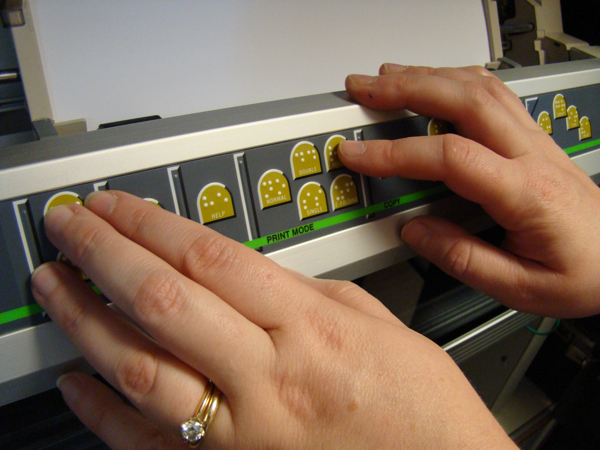
Embosser in use for printing braille. Image by Locally Toned.
Assistive technology devices and software often allow a student with a disability to perform a task that he or she couldn’t otherwise do. The range of A.T. goes from “low tech” (like pencil grips or magnifying glasses) to “high tech” (like iPads and environmental control units). Some of the categories of A.T. include the following:
Augmentative Communication System:
Increases or improves communication for students with receptive (taking in communication) or expressive (producing communication) language disabilities.
Braille Embossers and Translators:
Converts text from a computer into Braille (raised dots on a page) for a student who has no or low vision.
Captioning:
Creates a text message of the audio portion of video and television and displays it on the
screen.
FM Systems:
Wireless assistive listening/hearing devices that enhance hearing over distance and in noisy environments.
Mobility and Transportation Aids:
Helps students with physical disabilities move within their environment. Examples include walkers, lifts, wheelchairs, adapted bikes, ramps and car seats.
Screen Reader:
A software program that uses synthesized speech to read text out loud.
Switches and Switch Software:
Provides input into a computer or other device when it is not possible to use a more direct method like a keyboard or mouse.
Talking Word Processors:
Writing software programs that provide audio feedback as the student writes.
Voice Recognition:
Allows the student to speak to the computer to input data or control computer functions.
Word Prediction Programs:
Allows the student to select a desired word from an on-screen list located in the prediction window, thereby saving time for students who are slow typists.




